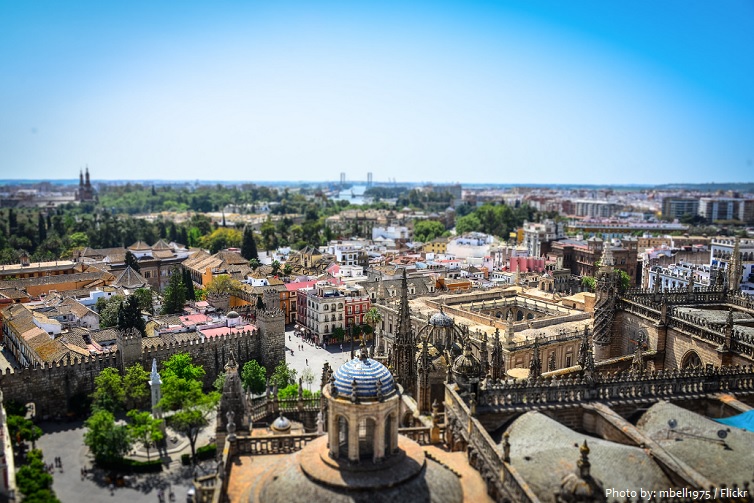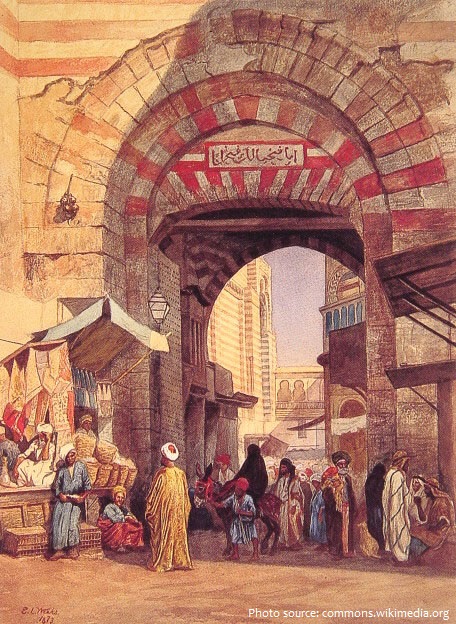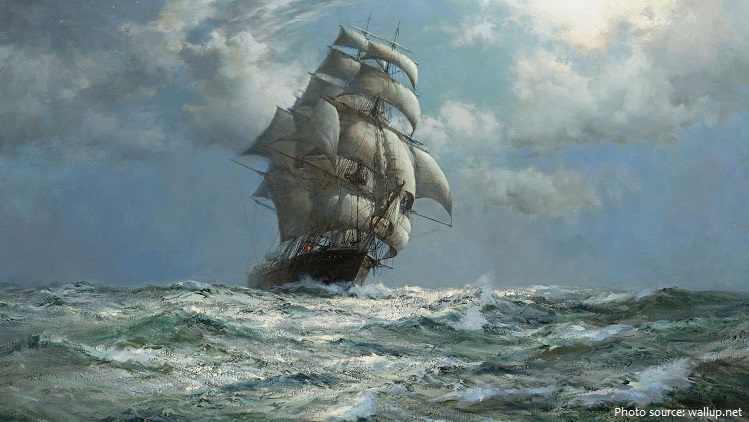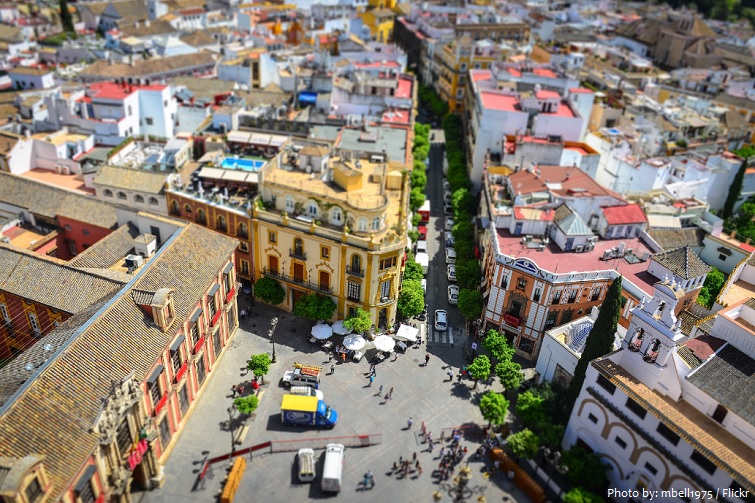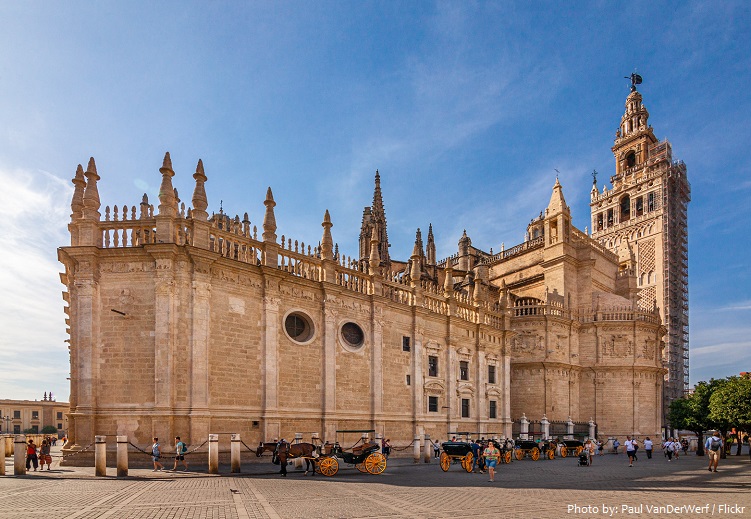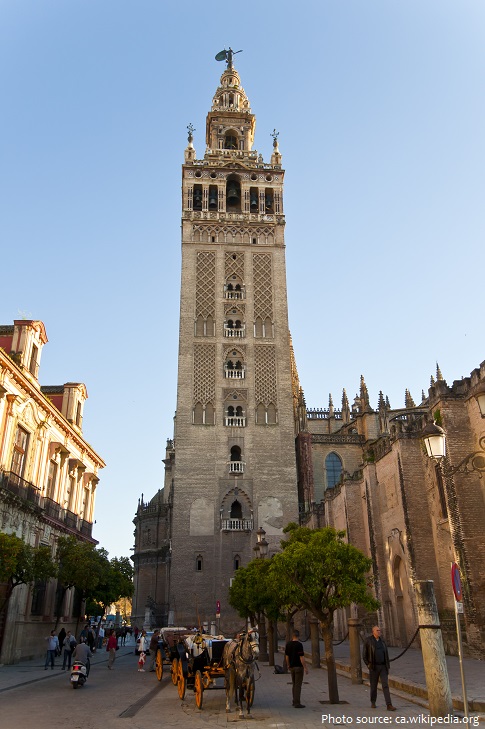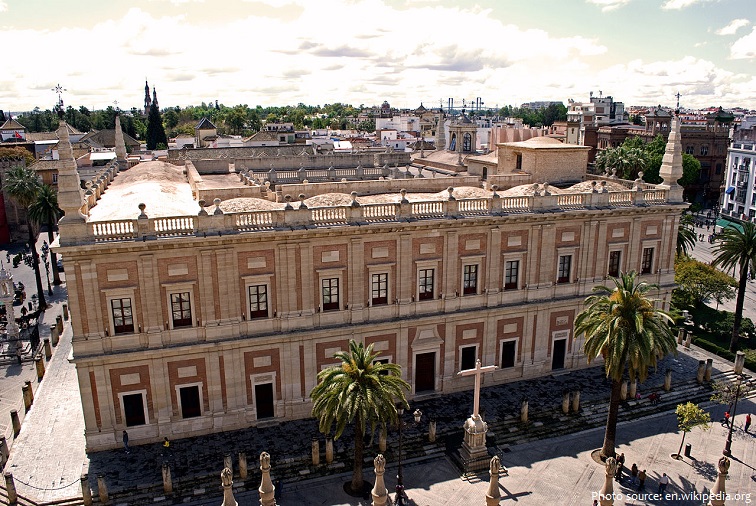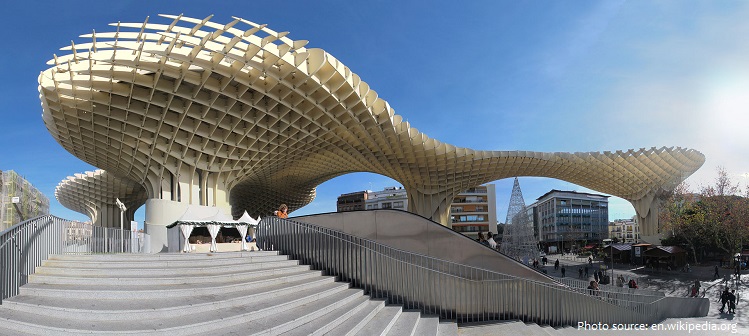Seville is a city in Spain.
It is the capital of the Spanish region called Andalusia and of the province of Sevilla.
The city is locatd in southern Spain and lies on the east bank of the Guadalquivir River.
As of April 2020, the population of Seville is about 700,000 people. It is the 4th largest city in Spain.
The city covers a total area of 140 square kilometers (54 square miles).
The average altitude is 7 metres (23 feet) above sea level.
Seville is approximately 2,200 years old. The passage of the various civilizations instrumental in its growth has left the city with a distinct personality, and a large and well-preserved historical centre.
Sevilla was originally an Iberian town.
The Romans when they came to Spain gave it the Latin name of Hispalis.
Over time this changed to be spelled in English as Seville.
The Arab Moors took the city when they invaded the country, and you can still see a lot of the buildings they built during their 800-year stay in Spain (711-1492).
After the Muslim possession of Sevilla was ended in 1248 by Spanish Christians under Ferdinand III, the substantial Moorish and Jewish minorities were driven into exile, and the local economy temporarily fell into ruin.
The Spanish discovery of the Americas brought new prosperity to the city. Sevilla became the centre of the exploration and exploitation of America.
In 1519, Ferdinand Magellan departed from Seville for the first circumnavigation of the Earth.
Coinciding with the Baroque period of European history, the 17th century in Seville represented the most brilliant flowering of the city’s culture; then began a gradual economic and demographic decline as silting in the Guadalquivir forced the trade monopoly to relocate to the nearby port of Cádiz.
The 20th century in Seville saw the tribulations of the Spanish Civil War, decisive cultural milestones such as the Ibero-American Exposition of 1929 and Expo ’92 commemorating the 500th anniversary of Columbus’ historic voyage.
Today, Seville is a dynamic, bustling and sophisticated European city with a rich array of restaurants, festivals, public rituals, music, theater, movies, and wonderful parks, river walks, and boat tours.
Seville’s old town, with an area of 4 square kilometres (2 square miles), contains three UNESCO World Heritage Sites: the Alcázar palace complex, the Cathedral and the General Archive of the Indies.
The Alcázar of Seville, is a royal palace in Seville, Spain, built for the Christian king Peter of Castile. It was built by Castilian Christians on the site of an Abbadid Muslim residential fortress destroyed after the Christian conquest of Seville. The palace is a preeminent example of Mudéjar architecture in the Iberian Peninsula but features Gothic, Renaissance and Romanesque design elements from previous stages of construction.
The Cathedral of Saint Mary of the See, better known as Seville Cathedral, is a Roman Catholic cathedral in Seville. It is the tenth-largest church in the world (its size remains a matter of debate) as well as the largest Gothic church. After its completion in the early 16th century, Seville Cathedral supplanted Hagia Sophia as the largest cathedral in the world, a title the Byzantine church had held for nearly a thousand years.
The Giralda is the bell tower of Seville Cathedral. It was built as the minaret for the Great Mosque of Seville in al-Andalus, Moorish Spain, during the reign of the Almohad dynasty, with a Renaissance-style top added by the Catholics after the expulsion of the Muslims from the area. The tower is 104.1 m (342 ft) in height and remains one of the most important symbols of the city, as it has been since the Middle Ages.
The Archivo General de Indias housed in the ancient merchants’ exchange of Seville, the Casa Lonja de Mercaderes, is the repository of extremely valuable archival documents illustrating the history of the Spanish Empire in the Americas and the Philippines. The building itself, an unusually serene and Italianate example of Spanish Renaissance architecture, was designed by Juan de Herrera.
The Plaza de España is a plaza in the Parque de María Luisa. It was built in 1928 for the Ibero-American Exposition of 1929. It is a landmark example of the Regionalism Architecture, mixing elements of the Baroque Revival, Renaissance Revival and Moorish Revival (Neo-Mudéjar) styles of Spanish architecture.
Metropol Parasol is a wooden structure located at La Encarnación square, in the old quarter of Seville. It was designed by the German architect Jürgen Mayer and completed in April 2011. It has dimensions of 150 by 70 metres (490 by 230 ft) and an approximate height of 26 metres (85 ft) and claims to be the largest wooden structure in the world. Its appearance, location, delays and cost overruns in construction resulted in much public controversy. The building is popularly known as Las Setas de la Encarnación (Incarnation’s mushrooms).
The Plaza de toros de la Real Maestranza de Caballería de Sevilla is a 12,000-capacity bullring in Seville. During the annual Seville Fair in Seville, it is the site of one of the most well-known bullfighting festivals in the world. It is a part of the Real Maestranza de Caballería de Sevilla, a noble guild established for traditional cavalry training. The ring itself is considered one of the city’s most enjoyable tourist attractions and is certainly one of the most visited.
Seville is on the same parallel as United States west coast city San Jose in central California.
A very old story says that the city was started by the famous hero of Greece, named Hercules.
The people who live in the city are called Sevillanos.
The tapas scene is one of the main cultural attractions of the city: people go from one bar to another, enjoying small dishes called tapas (literally “lids” or “covers” in Spanish, referring to their probable origin as snacks served on small plates used to cover drinks).
The annual average temperature is 25.4 °C (78 °F) during the day and 13 °C (55 °F) at night.

